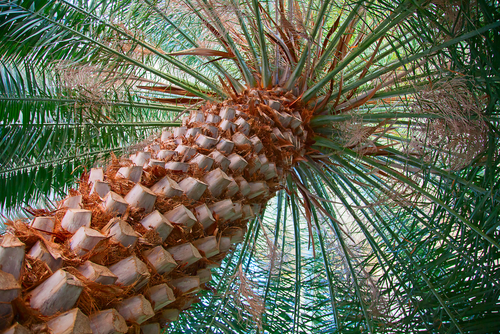It was water that impressed me first when I got back to the U.S.
I spent the month of June in Saudi Arabia, teaching teenage girls about writing and science. On the van ride home from the airport the other day, I couldn’t believe the trees. I’d forgotten about trees. The highways are lined with them. My neighborhood is full of them. All these magnificent green trees, everywhere, sucking water from the ground and spewing it into the air, like sprinklers attached to massive, woody wells. And there’s humidity in the air. Already the rough, dry patches on the backs of my hands are starting to sort themselves out. And I can drink the water from the tap.
When I stepped out of the cool airport into the Saudi air on the evening of May 31, I thought I was standing by of a bus exhaust. But I looked and looked and there was no bus. That was just the air. Hot. Excessively so. And moving. Yesterday I walked past a bus here in D.C. and it felt just like that first step into Saudi Arabia.
I quickly learned that hot comes in many varieties. That first combination, hot and windy, was the worst. I eventually experienced most of the possible combinations of hot/less hot; windy/still; dusty/clear; and dry/slightly less dry. On a dusty, windy, not-so-hot, dry day, I took a walk but tried to keep my eyes closed, to keep the dust from sneaking in. On a clear, still, dry day of 105 or so, it felt downright balmy and my class of 14 girls stayed out for half an hour in the shade, playing games in English. But, on a day with hot wind, we lasted only a minute, irritated with blowing papers and hair.
The other teachers and I claimed we would never complain about the heat back home again, after the Saudi heat, but we knew it wasn’t true. The heat here feels worse. Humid. I don’t hold with any “heat index” nonsense. 85 degrees and humid doesn’t feel like 95 degrees and dry; it feels like 85 degrees and humid. It feels horrible in a way that 95 and dry doesn’t. In 95 and dry, your sweat evaporates. In 85 and humid, you walk around feeling like a saturated, miserable, grumpy sponge.
Again and again this week, the trees amazed me. Maples and oaks and whatever all the others are, waving their wild leaves around.
Not only are there trees outside, there are also people. At this time of year in Saudi Arabia, from what I could see, outside is mostly the place between your air-conditioned vehicle and the air-conditioned buildings. A billboard on the compound where I stayed warns against the dangers of vitamin D deficiency, as if we were in the Arctic. Buildings are air-conditioned to the point where I wished I’d brought my wool sweater with the hood. To the desert. In June. Actually, that was the only thing that would drive people outside; they seemed accustomed to regulating temperature by going back and forth between frigid interiors and boiling exteriors.
You’d think I would be shocked to see women’s exposed limbs, but actually I saw a lot of that. On the residential compound where I was living, the black abaya, a floor-length cloak, was not a requirement for women; I put mine on for half an hour in the morning and half an hour in the evening, for the bus rides to and from school. The school was off the compound, but it was an all-female environment, so everybody wandered around in their regular clothes. Or, in my case, in a bunch of business-casual clothes I’d acquired just before leaving.
The main thing I seem to learn when I go to a new place is that it is so much more than the caricature we carry around in our heads. Some French women are fat. People keep asking me what Saudi women think of the system they live in. It seemed nosy to ask, since I wasn’t there as a reporter, and anyway I was barely keeping my head above water as a first-time teacher. I gather that some women don’t like wearing abayas, and some do. Some women think they should be allowed to drive, and some think the current system—shouting directions at your driver—works fine.
I can’t report on Saudi men; I barely met any. A lot of energy goes into keeping the society segregated. Even McDonald’s has a “family section” where women can sit, with men they are related to, in curtained-off partitions. The men I interacted with were almost all American or Filipino.
The main things that stick with me from last month: The women I worked with were smart, talented, and generous. The girls were nerdy, fun, and enthusiastic. And Saudi Arabia is very, very hot.
Photo: Natali Glado, Shutterstock

Loved your account of what it was like teaching in Saudi. I’ve been to Dubai and enjoyed my stay there, would love to visit some of the other middle eastern countries. I have no issues dressing according to the customs of wherever I am. Did you take any photos or was that not allowed?
Thanks for sharing, wonderful story. That is great that you had the opportunity to teach young girls about writing and science in Saudi Arabia. As for the heat I feel you. Heat and humidity is a bad combo.
Thanks for the nice comments! I was told to avoid taking pictures with women in them, which makes photography in public places a little challenging. I did take pictures, but nothing I thought was good enough to post here. Really, the most appropriate picture might be the big oaks near my house – those are still blowing my mind.
A fan of yours indeed . Thank you for sharing this lovely story , these Saudi girl’s are really lucky .
Best of luck